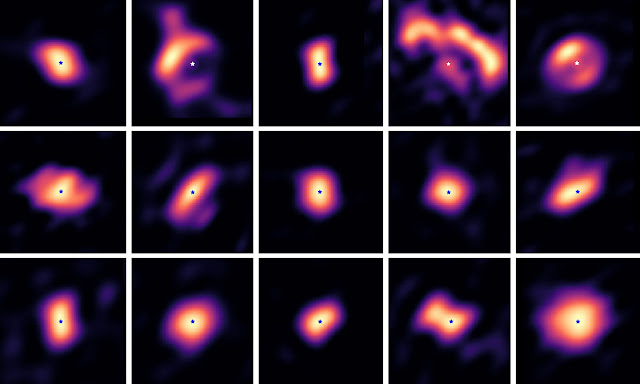- Get link
- X
- Other Apps
- Get link
- X
- Other Apps
An international team of astronomers has captured some extremely rare photos of planetary systems forming hundreds of light-years away.
crossorigin="anonymous">style="display:block"
data-ad-client="ca-pub-2375157903127664"
data-ad-slot="7629783868"
data-ad-format="auto"
data-full-width-responsive="true">
While photos of "protoplanetary discs" have been seen before, the process has never been documented in such detail.
crossorigin="anonymous">style="display:block"
data-ad-client="ca-pub-2375157903127664"
data-ad-slot="7629783868"
data-ad-format="auto"
data-full-width-responsive="true">
“In [earlier] pictures, the regions close to the star, where rocky planets form, are covered by only few pixels,” lead author Jacques Kluska, from KU Leuven in Belgium, said in a statement.
The photos depict the core regions of young stars where planets begin to form, gathering materials from dust and gas. Dust grains aggregate into larger rocks, some of which grow into entire rocky planets.
“We needed to visualize these details to be able to identify patterns that might betray planet formation and to characterize the properties of the disks,” Kluska said.
To collect the photos, the researchers had to employ a relatively new imaging technology called infrared interferometry at the European Southern Observatory (ESO) in Chile.
The approach does not immediately generate an image. The team was able to isolate the discs from the light radiated by the star itself by using mathematical models, similar to how the first photos of a black hole were created.
The new photos' level of detail is astounding.
“Distinguishing details at the scale of the orbits of rocky planets like Earth or Jupiter (as you can see in the images) — a fraction of the Earth-Sun distance — is equivalent to being able to see a human on the Moon, or to distinguish a hair at a 10 km distance,” Jean-Philippe Berger, principal investigator from the Université Grenoble-Alpes, France, explained in the statement.
So what did they end up seeing in the new images? Brighter and darker spots of light could be a sign that “there could be instabilities in the disk that can lead to vortices where the disk accumulates grains of space dust that can grow and evolve into a planet,” according to Kluska.
READ MORE: The Before Times of a Solar System [The Atlantic]


Comments
Post a Comment